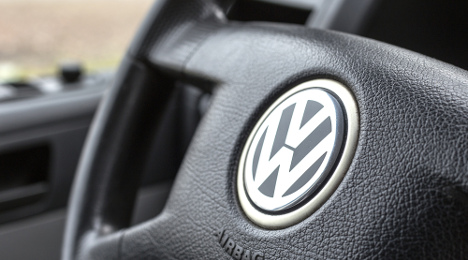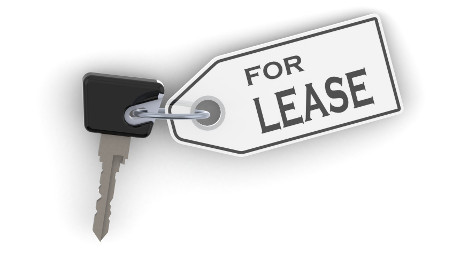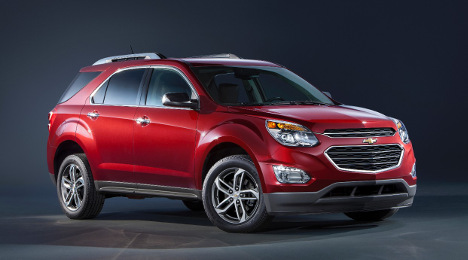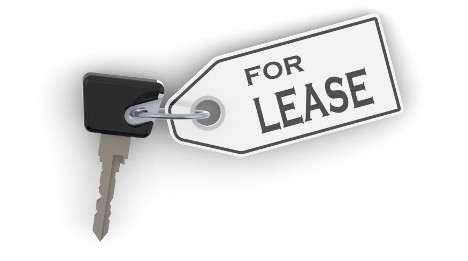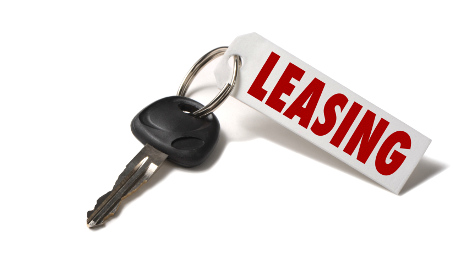Thirty-three percent – that’s the increase in lease maturities expected to possibly return to market in 2016 compared to this year – which translates to roughly 800,000 additional units on a year-over-year basis.
That’s according to J.D. Power’s estimates provided by Larry Dixon, the senior manager of market intelligence at NADA Used Car Guide.
Perhaps the most interesting angle of these anticipated lease returns, as mentioned in Auto Remarketing’s recent analysis of used-vehicle supply increases, is that the majority of vehicles expected to come back in 2016 don’t exactly fall in line with what’s selling right now.
According to Dixon, the off-lease supply in 2016 will be split as follows:
- 56 percent cars
- 44 percent trucks
But if you look at the broad-segment breakdown of current year-to-date new-vehicle sales, you’ll see that the opposite is the current trend in shopping interests:
- 56 percent trucks
- 44 percent cars
Let’s dive a bit deeper into those figures.
Compact and midsize cars, in terms of those two segments’ total share of lease maturities for 2016 to 2017, will average 33 percent. As Dixon points out, these two segments have experienced particularly soft pricing in both the new- and used-vehicle markets.
J.D. Power’s current year-to-date figures for those two segments, for used vehicles up to eight years in age, reveals a depreciation rate of 14.6 percent, compared to the overall market depreciation of 11.7 percent.
And Dixon says dealers can expect additional softness in used-vehicle prices next year as these off-lease vehicles return to market and inflate supply.
As expected, the vehicles returning next year will be predominantly three years of age, falling in line with what is typically the most-popular lease term.
Data from J.D. Power’s Power Information Network (PIN) reveals that lease terms between 36 and 41.9 months made up 79.4 percent of the lease originations made in 2013. That share stands at 80 percent CYTD.
As Kelley Blue Book spotted softening activity both on the retail and wholesale sides associated with the German OEM, Wantalease.com highlighted that Volkswagen is among several automakers continue to offer aggressive vehicle lease deals for less than $150 per month.
Current deals on the Jetta S stand at $139 monthly, and the Passat 1.8T Limited Edition is listed at $179 monthly.
Officials noted Volkswagen joins other brands such as Ford, Chevrolet, Honda, Nissan and Toyota in offering multiple lease deals below $200 per month. Chevrolet is offering three models under $200 per month, including the Malibu LT, Cruze LT and Equinox 2WD LT.
Trucks continue to offer plenty of vehicle lease deals as well, with several models offered below $250 per month. Toyota RAV4 LE FWD, Honda CR-V LX 2WD and the Ford F-150 SuperCab SWB 4×4 XLT highlight current monthly lease deals.
In the luxury category, the Acura ILX, BMW 328i and Lexus IS 250 are currently offered for less than $350 per month.
“These low lease deals will continue for some time as dealers and carmakers look to continue finding ways to offer monthly payments that are in line with many family budgets,” said Scot Hall, executive vice president of Wantalease.com.
“We’ll also be keeping an eye on Volkswagen to see if they begin to get aggressive with other popular models in order to keep their showrooms full of car shoppers in light of their current recall situation,” Hall added.
In light of the ongoing story, Black Book also took a look at depreciation for specific VW diesel vehicles impacted by the recent emissions situation.
The latest Black Book Market Insights report shows that since the news regarding VW broke on Sept. 18, each vehicle Black Book has tracked displayed a higher level of depreciation compared with its competitive gas models. Comparisons from Black Book are as follows:
Golf Diesel: -8.7 percent
Gas Models: -3.7 percent
Jetta Diesel: -13.8 percent
Gas Models: -3.7 percent
Beetle Diesel: -9.3 percent
Gas Models: -3.2 percent
Passat Diesel: -13.5 percent
Gas Models: -2.8 percent
More VW activity details from KBB
On Wednesday, Kelley Blue Book reported that average auction prices, along with new-car shopping activity on KBB.com, for Volkswagen diesel vehicles have declined four weeks after the diesel emissions issue was announced.
The average auction price for Volkswagen diesel models dropped by nearly 16 percent since the news broke of the emissions crisis. The average auction price for the brand’s gasoline-powered vehicles declined by 2.9 percent.
On KBB.com, Volkswagen new-car shopping activity for affected TDI models has decreased on average by 2.4 percent.
“According to Kelley Blue Book Field Analysts, some auctions are still holding off on selling the affected Volkswagen inventory,” Kelley Blue Book analyst Tim Fleming said. “While Volkswagen diesel auction prices are in decline, we could see larger fluctuations depending on how this inventory is handled.”
KBB shared three other trends from its website associated with Volkswagen traffic comparing activity from Aug. 31 to Sept. 13 against Sept. 14 to Oct. 18
• The Volkswagen Golf SportWagen and Golf have seen the most significant declines in shopping activity, with decreases of 6.2 percent and 3.7 percent, respectively.
• The Audi A3 and Volkswagen Jetta SportWagen are the only TDI models seeing increases in activity, at 1.6 and 3 percent respectively, which is consistent with segment-level traffic on KBB.com.
• Audi A3 shoppers are increasingly cross-shopping competing luxury models following the announcement. The most highly cross-shopped vehicles are the Lexus NX, BMW 2-Series and Mercedes-Benz CLA.
“During the past four weeks following the emissions announcement, traffic to KBB.com has generally decreased after an initial surge in interest for Volkswagen diesel models, likely because of the stop-sell and negative press,” said Arthur Henry, senior manager of strategic insights for Kelley Blue Book.
“Interestingly, with regard to cross-shopping data, consumers are not looking at fuel-efficient or hybrid vehicles,” Henry continued. “For example, shoppers interested in the Jetta TDI are looking to the Honda Civic, Mazda3 and Ford Fusion as alternatives, according to cross-shopping data from KBB.com.”
Swapalease.com reported lease credit approvals have finished above 80.0 percent approvals mark during the last three months. The development marks the first time approvals have shown this level of success in more than two years.
So far in 2015, site officials indicated, lease credit approvals rate have moved up to 72.2 percent.
The site also pointed out that lease credit approvals saw a “noticeable” jump from the same month a year ago, when just 64.5 percent of approvals were passed compared with the 80.0 percent this September.
“Whereas earlier this year we were seeing more turbulence from month to month on the approvals rate, we’re now getting to a point where a healthy approvals rate is more consistent,” said Scot Hall, executive vice president of Swapalease.com.
“We expect to finish the year trending in this direction but will keep an eye on what happens with any interest rate decisions and how that may impact lease approvals levels,” Hall added.
To recap, Swapalease allows a person to transfer out of their existing vehicle lease contract by allowing them to find an interested shopper looking for a short-term lease opportunity. Drivers looking to escape must have their credit approved by the lease company before any transfer of contract can take place.
Additionally, existing lease contracts for vehicles under recall must show documentation of repair before the lease company will complete the transfer.
When Experian Automotive discovered the Top 10 most popular new vehicles leased during the second quarter, a reason why these models were included became apparent. In most cases, the difference in average monthly payment between a lease and an installment contract was at least $100.
Here’s the rundown of those models and payment metrics according to the latest State of the Automotive Finance Market report:
1. Honda Civic
Loan payment: $362
Lease payment: $251
2. Honda Accord
Loan payment: $431
Lease payment: $318
3. Toyota Camry
Loan payment: $427
Lease payment: $303
4. Honda CR-V
Loan payment: $421
Lease payment: $325
5. Ford Escape
Loan payment: $412
Lease payment: $316
6. Toyota Corolla
Loan payment: $357
Lease payment: $263
7. Ford Fusion
Loan payment: $408
Lease payment: $300
8. Toyota RAV4
Loan payment: $436
Lease payment: $328
9. Chevrolet Equinox
Loan payment: $424
Lease payment: $293
10. Nissan Altima
Loan payment: $424
Lease payment: $298
Along with these 10 models, Experian also mentioned that the average term of lease is what's common to see at franchised store showroom and F&I offices — an average of 36 months. However as Auto Remarketing reported earlier, longer lease terms are gaining steam.
Terms lasting 25 to 36 months constituted much of the leasing activity during the second quarter (67.36 percent). But analysts also noticed that leases ranging from 37 to 48 months represented 22.28 percent of the Q2 volume.
Leasing continued to remain strong during the second quarter, according to the latest State of the Automotive Finance Market report that Experian Automotive released on Thursday.
But after looking at those recent leasing deals being booked, dealers might have to wait a little bit longer for those vehicles to come back around as possible units for their certified pre-owned inventory.
In Q2, Experian found consumers continued to select leasing as a popular option, as 31.4 percent of all new vehicles financed were leases, up from 30.2 percent the prior year.
However, according to the analysis, leasing terms also increased with leases extending past the average of 36 months into the 37- to 48-month range increasing by 18 percent.
Moreover, Experian the average lease payment dropped $13 a month, going from $407 in Q2 2014 to $394 in Q2 2015.
“The automotive finance market continues to progress in response to consumer demand,” said Melinda Zabritski, Experian’s senior director of automotive finance.
“The availability of different financing options allows consumers to stretch their dollar and more easily find a vehicle that meets their budgetary needs,” continued Zabritski, who again will be one of the presenters during the SubPrime Forum at Used Car Week.
“Lenders and automotive dealers also can benefit greatly from these trends by gaining insight that will enable them to take advantage of similar market opportunities in the future,” she added.
Gap between new & used vehicle payments climbs beyond $100
The gap between averages associated with new-vehicle installment contracts and used-vehicle deals continues to widen while the amount total amount financed as well as stretching terms are on the rise, too.
The industry reached a point on Thursday where Experian Automotive announced that the difference between the average monthly payments for new and used vehicles reached its highest level on record.
According to the report, the average monthly payment for a new vehicle in the second quarter of 2015 was $483, while the used was $361 — widening the gap between the two to $122, the largest margin since Experian began publicly reporting the data in 2008.
Furthermore, analysts determined the difference between the total loan amounts for new and used vehicles also increased significantly. On average, consumers financed $28,524 for a new vehicle and $18,671 for used — a difference of $9,853.
“As the price of new vehicles continues to rise, and the gap between monthly payments for new and used vehicles widens, we see more and more consumers looking for ways to keep their vehicle payments affordable,” said Zabritski, who will be part of the collection of industry experts at Used Car Week that runs from Nov. 16-20 at The Phoenician in Scottsdale, Ariz.
“This could be especially true for consumers who have the financial ability to pursue a new vehicle but may have sticker shock at the rising prices and don’t want the accompanying high monthly payments,” she continued.
Findings from the report also showed that consumers are continuing to extend their loan terms as a way to keep payments down, especially for used vehicles.
Experian indicated the percentage of used vehicles financed for 73 to 84 months increased by 14.8 percent from Q2 2014 to reach 16.1 percent — the highest percentage on record.
Additionally, analysts noticed new vehicles financed for the same term length climbed 19.7 percent from the previous year to reach 28.8 percent.
4 other trends
Experian highlighted four other findings from its latest report, including:
• Used-vehicle financing is at an all-time high of 55.5 percent, compared with 53.8 percent the prior year.
• The total percentage of new vehicles financed in Q2 reached a record high of 85.8 percent, compared with 85 percent a year earlier.
• The average credit score for a new vehicle loan dropped two points from last year to reach 709. The average credit score for a used loan increased one point to 645 over the same time period.
• During the second quarter, the average interest rate for a new-vehicle loan was 4.8 percent, up from 4.6 percent in Q2 2014. The interest rate for used-vehicle loans was 9.1 percent, up from 8.8 percent over the same time period.
There was a 4.79-percent increase in the Fitch Ratings auto lease residual value index in June, which was fairly close to the behavior shown in the prior six months.
But here’s the thing: residual values were trending downward in the first half of the year, and that’s likely to be the case in the second half, according to the latest vehicle depreciation put out jointly by Black Book and Fitch Ratings.
An influx of trade-ins and lease returns, spurred by booming new-car sales the past three years, has put pressure on residual values, the report said.
“The leasing market volume has seen significant growth over the past three years, and returns have thus increased dramatically as these vehicles hit their lease-end maturities, and will rise higher in the remainder of 2015,” the report indicates.
“Returning lease volumes, totaling approximately 3.81 million units from auto lease ABS transactions rated by Fitch, will hit the wholesale market in the second half of 2015,” it continued. “This will be up 24 percent versus 2014 volumes, and naturally constrain residuals in the latter part of the year.”
Speaking of the wholesale market, NAAA’s latest Auction Industry Report indicates that auction volume through June is up 7.3 percent year-over-year. In all of 2014, it increased 4.9 percent.
Trending of index
Going back to Fitch’s auto lease RV index, April had the largest gain (7.30 percent) so far this year, with February having the lowest gain at 3.92 percent.
On average, the gain has been 5.19 percent this year, down from 5.75 percent last year.
That said, the picture for auto lease ABS securitizations appears to still be a rosy one.
“Despite the pressure on residuals this year, overall asset performance in auto lease ABS securitizations is expected to be stable, while Fitch continues to have a positive outlook for ratings performance. The agency’s positive rating outlook is driven by the number of subordinate note classes coming up for review in 2015, combined with stable asset performance even with lower residual gains this year,” Fitch explains.
“To date this year, Fitch upgraded seven subordinate tranches from five lease transactions through early August, versus ten from six deals in full-year 2014.”
Swapalease.com reports lease credit approvals entering August rose as sharply as summertime temperatures, registering an increase of 17.5 percent above July activity.
All told, the volume of vehicle lease applicants who were approved to take over a contract on the Swapalease.com marketplace during July came in at 84.6 percent.
The site also noted the year-to-date approvals rate improved to 70.3 percent, marking a steady rise from February when the rate was just 65.5 percent.
Swapalease executives noted that July approvals activity was markedly high during the same time last year, when 81 percent approvals took place.
Swapalease. executive vice president Scot Hall explained the strong lease credit approvals rate follows the recently announced strong consumer credit report for June, when credit borrowing grew 7.3 percent with an additional $20.7 billion according to the Federal Reserve.
In fact, Hall mentioned the June increase marked a gain of at least 7 percent in three of the past four months, signaling continued strength in the economy, particularly for non-revolving debt which includes auto loans.
“The positive momentum continues to pick up steam, with July showing the strongest approvals rate so far this year, and the strongest since last August,” Hall said.
“The collective industry is watching to see how long this momentum continues, especially for key areas such as lease credit, car sales and the broader economy,” he added.
In the State of the Automotive Finance Market report released Wednesday by Experian Automotive, Melinda Zabritski detailed the healthy trends being spotted in car financing through the second quarter of this year.
Prior to this report, Zabritski shared a few other auto financing-related trends as part of Auto Remarketing’s annual Power 300 issue.
Below is our Q&A with Experian’s senior director of automotive finance, as featured in the Aug. 1 issue of the magazine:
Auto Remarketing: Experian recently released a report on the most prevalent areas for leasing. Per that information, what are some of the factors that make Michigan, New York and New Jersey so leasing heavy?
Melinda Zabritski: Leasing in Michigan is mostly impacted by the domestic manufacturers. When you look at what is leased in that state the domestics lead the market. Other regions with heavy leasing tend to have high population concentrations with short driving distances (e.g. N.Y. and N.J.).
AR: On the other hand, Arkansas’s leasing penetration rate of 1 percent is significantly lower than the national high. What are some of the factors contributing to this rate?
MZ: Arkansas has fewer high population centers and leans toward lower credit quality – both of these impact leasing. Leasing remains a very prime product.
AR: Earlier (in June), Experian reported long-term vehicle loans broke records. What risks, if any, do these growing loan terms present to the industry? Why or why not?
MZ: Overall, long term loans can benefit consumers by helping keep payments down which can prove a positive impact toward delinquency. The negative impact can happen when the consumer doesn’t keep their vehicle long enough to result in positive equity. There can also be a negative to the lender if the loan does go delinquent. In those cases, it’s likely there will be a higher loan balance resulting in increased severity.
AR: Also, long-term loans are often historically more popular on new-car vehicles. Why the surge in longer-terms for used-vehicles, as well? What is pushing that trend?
MZ: Long-term loans have been around historically on used vehicles. However, the more recent growth is in line with the increased sales seen in the past few years.
Long-term loans are essentially found on late-model used vehicles and as vehicles have been getting more expensive, today’s late model used vehicle carries a higher price tag — making the long term loan very appealing.
Other features in this special section include:
4 questions with NextGear’s Brian Geitner
4 questions with NADA Used Car Guide's Larry Dixon
4 questions with Infiniti CPO manager Sam Liang
4 questions with Black Book’s Anil Goyal
4 questions with Autotrader president Jared Rowe
4 questions with Geoff Parker of ADESA Cincinnati-Dayton
4 questions with Hudson Cook chairman Tom Hudson
4 questions with Edmunds CEO Avi Steinlauf
Cox Automotive and Westlake Financial Services are among the companies involved in overhauled and pilot programs to provide vehicles for Uber, the online transportation service provider that’s grown in popularity in some of the largest U.S. metro areas.
Uber explained this week that its revamped leasing program for its network of drivers dubbed Xchange Leasing is an option administered by a subsidiary and designed to fit with the flexibility that drivers value most.
Officials called the Xchange lease “one of a kind,” and offers value they believe traditional vehicle lease terms do not provide.
Unlike most multi-year leases that have high fees for early termination, Uber indicated drivers who participate in Xchange for at least 30 days will be able to return the vehicle with only two weeks’ notice and “limited” additional costs.
The company added its program allows for unlimited mileage and the option to lease a used vehicle, with routine maintenance also included.
“These features combine to create a product unlike anything on the market today,” Andrew Chapin, head of vehicle solutions for Uber, said in a blog post on the company’s website announcing the program.
Chapin indicated Uber first launched a vehicle solutions program 18 months ago in response to feedback from prospective driver-partners who wanted to join the Uber platform but didn’t have access to a qualifying uberX car. Since then, Chapin highlighted nearly 20,000 drivers have participated in the program and collectively taken earned more than $200 million driving with Uber.
“We’ve learned a lot –– about when and where people drive, details about their vehicle needs, and how we can connect partners with options that work best for them,” Chapin said.
“There is a lot of variability in how drivers use Uber, from the reasons they drive to the amount of time they spend on the platform. But one thing is clear: the key to flexible earnings is flexible financing,” he continued.
Xchange Leasing is currently operating in major metropolitan areas in California — Los Angeles, San Francisco, and San Diego — and select cities in Georgia and Maryland. We look forward to piloting the program in additional locations soon.
Uber highlighted Xchange Leasing complements additional options currently available within Uber’s Vehicle Solutions program, including:
— Discounts from automakers: Uber indicated it has expanded partnerships with OEMs to facilitate new-vehicle purchases. Participating automakers include: Toyota, General Motors, Ford, Hyundai, Nissan, Volkswagen and Chrysler. To date, participating Uber driver-partners have saved more than $7 million through these OEM discounts.
—Streamlined financing partnerships: Drivers looking for a vehicle have access to financing available through Westlake Financial Services, which offers traditional auto financing to U.S. drivers across the credit spectrum, and BAMA Leasing, which offers leases to drivers in Boston and San Francisco.
“We were introduced to the Uber team through one of our banking relationships. They recognized our adaptability and saw a fit with the new ways Uber was getting cars to its drivers,” said Casey Harmon, senior vice president of corporate development for Westlake Financial Services.
“Westlake is a full-spectrum lender, so we work with everyone,” Harmon continued. “We have no minimum FICO or income levels. We also work with all job and residence times, and we can work any credit mishaps that Uber drivers might have had.”
— Rental pilot: Uber added that some drivers want to rent a vehicle when and where they’d like to drive, instead of leasing or buying one. As a result, Uber is working with Flexdrive, a Cox Automotive company, to pilot a weekly rental option in Atlanta, Dallas, and Nashville, Tenn.
Drivers can rent an uberX-eligible vehicle on a weekly basis, with insurance and maintenance included.
“We hope to make rental options available in more cities in the future,” Chapin said.
“We’re excited about how these new solutions meet drivers’ unique needs, and offer more and better choices and greater flexibility than ever before,” he went on to say.
As new-car sales aren’t experiencing the usual summer slump, lease approvals are on the way up as well as we approach August.
According to lease marketplace Swapalease.com, lease credit approvals experienced a “healthy rebound” from June levels this month.
Lease approvals are up 3.5 percent from June to an overall approval rate of 72 percent, compared to 69.6 percent last month.
“Leasing continues to rise throughout the entire auto industry, with particular interest from younger drivers,” said Scot Hall, executive vice president of Swapalease.com. “Our marketplace remains an attractive option for these drivers to exercise their ability to change cars more frequently, and without harm to their credit.”
Year-to-date approvals are up, as well, with approval rates standing at 68 percent, which is up from the 64.5 percent rate seen during the same period of last year. The site noted the 2015 six-month mark is close to the “healthy” average of 70 percent that the company had historically benchmarked.
Swapalease.com management attributed the positive July numbers to continued summer strength in dealer showrooms, with continuous growth in sales.
Compared to the previous year, the lease credit approvals rate has been steadily improving, the site reported.
That said, Swapalease execs did point out the lease credit approval rate has been a bit volatile over the past year.
This could be due to the fact the site is seeing a steady flow of credit-challenged individuals with subprime credit as well as millennials in the market for a lease, many of which might not have the credit history or funds to secure such a deal.
But many millennials are surprising the industry and leaning more toward the leasing market.
In fact, Edmunds.com reported it is seeing a larger-than-average number of millennials in the leasing market, with the 18-34 age group accounting for 28.9 percent of cars sold as leases, compared with the industry average of 26.7 percent.
“Most millennials understand and accept that they’re on a tight budget and that they need to stick to it,” Edmunds.com director of industry analysis Jessica Caldwell said.
“But it doesn’t mean that their financial constraints limit them only to the most basic vehicles to get from Point A to Point B,” Caldwell continued. “If they see a chance to get into a nicer car while staying within their budget, they’re likely to explore that opportunity. In most cases, leasing opens the door to the bells and whistles that they couldn’t otherwise afford.”


